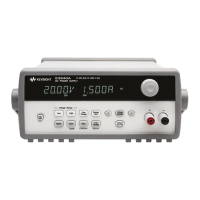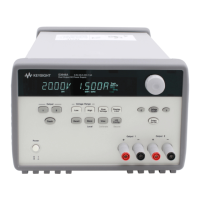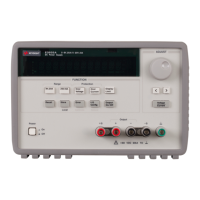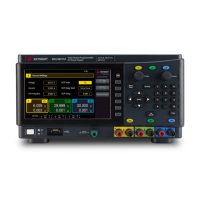6 Tutorial
Output Characteristics
160 E364xA User’s and Service Guide
When the load R
L
is less than R
C
, the output current will
dominate since the voltage will be less than the set voltage.
The power supply is said to be in the constant current
mode. The load at point 2 has a relatively low resistance, the
output voltage is less than the voltage setting, and the
output current is at the current setting. The supply is in the
constant current mode and the voltage setting acts as a
voltage limit.
Unregulated state
If the power supply goes into a mode of operation that is
neither CV nor CC, the power supply is unregulated. In this
mode the output is not predictable. The unregulated
condition may be the result of the AC line voltage below the
specifications. The unregulated condition may occur
momentarily. For example, when the output is programmed
for a large voltage step, the output capacitor or a large
capacitive load will charge up at the current limit setting.
During the ramp up of the output voltage, the power supply
will be in the unregulated mode. During the transition from
CV to CC as when the output is shorted, the unregulated
state may occur briefly during the transition.
Unwanted signals
An ideal power supply has a perfect DC output with no
signals across the terminals or from the terminals to earth
ground. The actual power supply has finite noise across the
output terminals, and a finite current will flow through any
impedance connected from either terminal to the earth
ground or terminals from the earth ground. The first is
called normal mode voltage noise and the second common
mode current noise.
Figure 6- 6 shows the simplified diagram
of common mode and normal mode sources of noise.
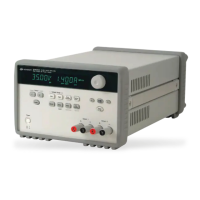
